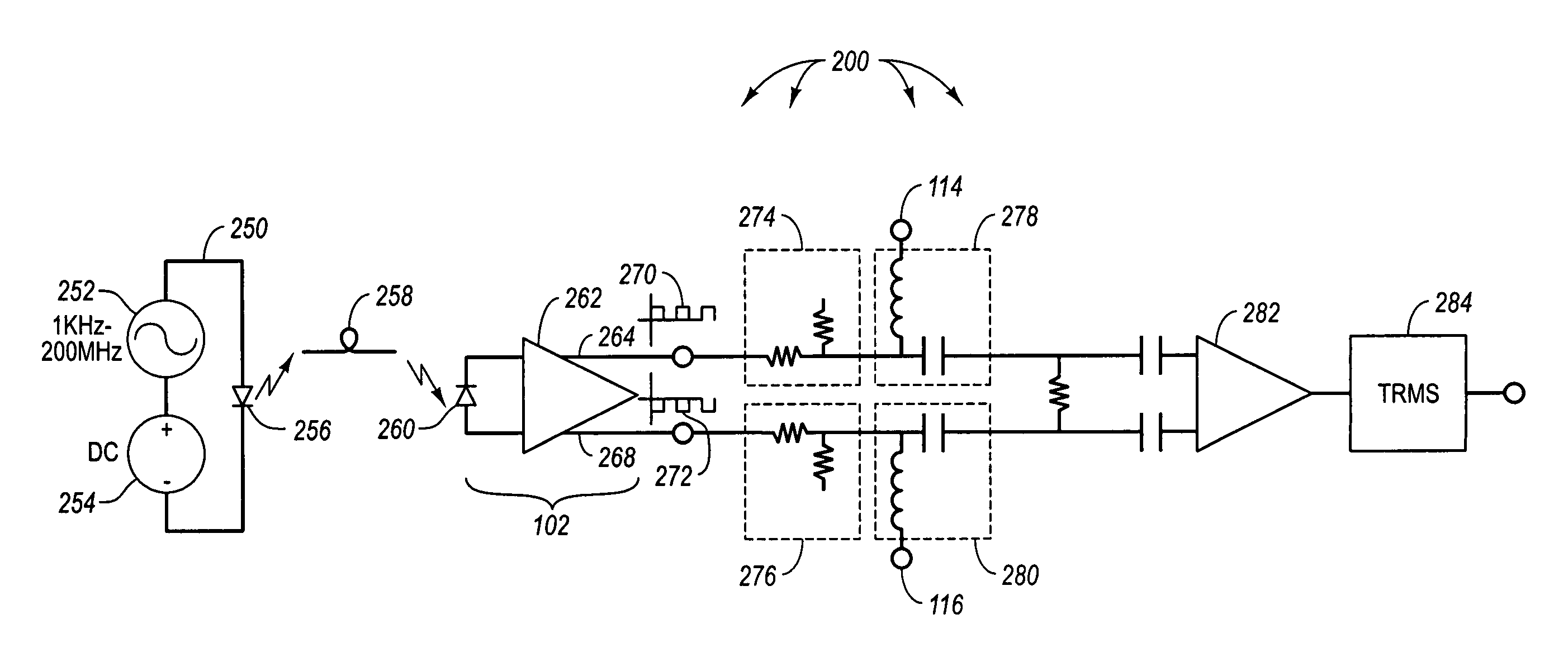True RMS converter board
a converter board and converter board technology, applied in the direction of optical radiation measurement, receiver monitoring, instruments, etc., can solve the problems of increasing the test time for each component, requiring an inordinate amount of manpower and equipment to process the testing of the components quickly, and testing is often not repeatable, so as to achieve the effect of conserving resources
- Summary
- Abstract
- Description
- Claims
- Application Information
AI Technical Summary
Benefits of technology
Problems solved by technology
Method used
Image
Examples
Embodiment Construction
[0020]Referring now to FIG. 1, an embodiment of the invention is illustrated as a test apparatus 100 that provides for monitoring of AC and DC signals produced by a transmitter. The apparatus 100 shown in FIG. 1 may be used to test transmitter devices. In one example, the transmitter device may be a TOSA or a transmitter which includes a laser diode or light emitting diode (LED). The apparatus shown in FIG. 1 includes a detector device 102. The detector device 102 may be for example a detector that includes a photodiode coupled to a transimpedance amplifier with a differential output. The detector device 102 will be discussed in more detail with reference to FIG. 2 described herein. The detector device 102 outputs a positive output signal at a positive output signal terminal 104 and a negative output signal at a negative output terminal 106. The positive output signal is fed into a positive input port 108 of an RMS detector board 110. Similarly the negative output signal is input to...
PUM
 Login to View More
Login to View More Abstract
Description
Claims
Application Information
 Login to View More
Login to View More - R&D
- Intellectual Property
- Life Sciences
- Materials
- Tech Scout
- Unparalleled Data Quality
- Higher Quality Content
- 60% Fewer Hallucinations
Browse by: Latest US Patents, China's latest patents, Technical Efficacy Thesaurus, Application Domain, Technology Topic, Popular Technical Reports.
© 2025 PatSnap. All rights reserved.Legal|Privacy policy|Modern Slavery Act Transparency Statement|Sitemap|About US| Contact US: help@patsnap.com



